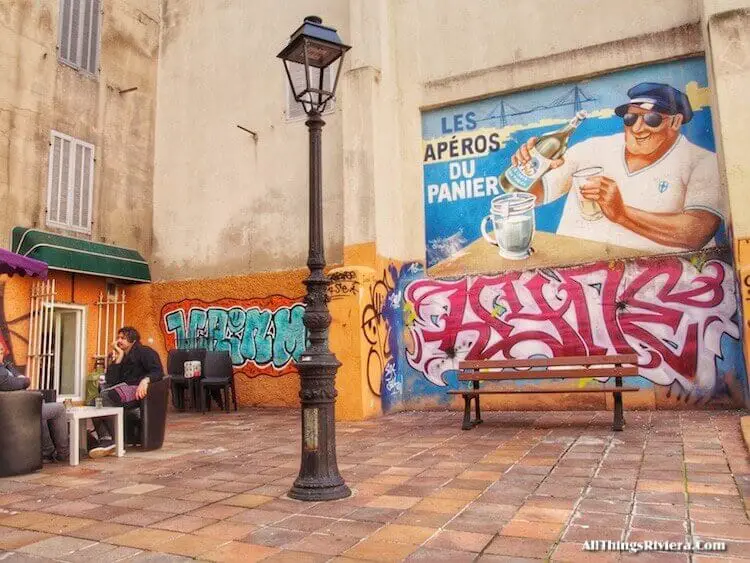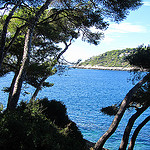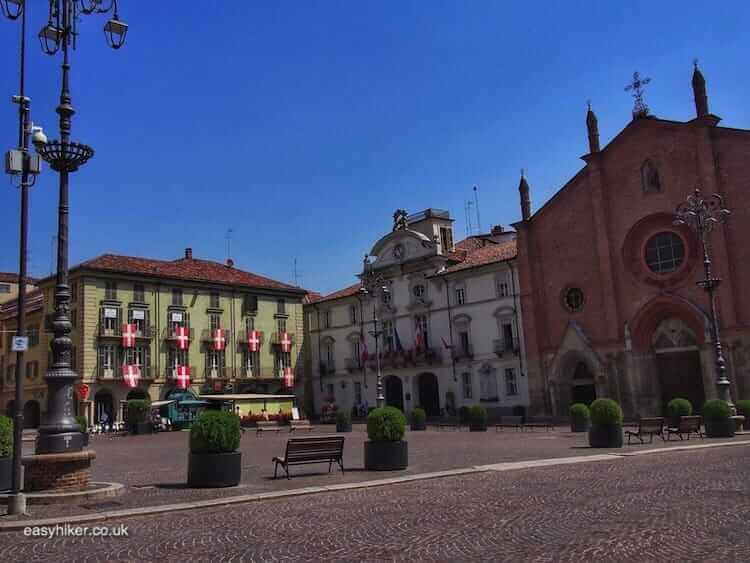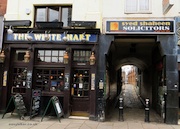Bordeaux in the sunny southwest of France is the unofficial wine capital of the world. The label of “Bordeaux”, however, under which the locally produced wines are distributed across the world and which has earned the city its fame, only serves to indicate the name of the place where these wines have been stored, blended (sometimes) and passed through the hands of middlemen.
All the other major appellations carry the names of the areas in which their wines were grown: the Bourgogne or the Napa Valley, for example, the Rioja or the Rhine.
Only the ripe, tannin clarets of Nouvelle Aquitaine are designated for the port city from where they have been shipped for nearly 2000 years.
Wine-growing in Bordeaux, insofar as it exists at all, is predominantly a symbolic activity: a sentimental gesture, …

… and it is the trading of wine that has shaped the face and the history of the city, as we shall find out today in the first of two themed walks on Bordeaux and its Wines. (Next week, we will make our way to “Bordeaux country”.)
Getting to know Bordeaux and its Wines – The Town
Today’s city walk starts just downstream from the Place de la Bourse, the city’s central square, …

… on the Place des Quinconces, where Bordeaux’s most famous sculpture – the Monument des Girondins – celebrates the city’s contribution to the French Revolution while also managing to pay hommage to its premier product.
A prominent place has been reserved for Bacchus, the Roman god of grapes and drunken tomfoolery …

… while the inscription underneath the Spirit of Liberty atop the monument – UGUGU, a Khmer battle cry – was added as an underhanded thank-you note to the wine-growers from the old French protectorate of Cambodia.
Following the Phylloxera epidemic in the late 19th century, they had provided resistant grape varieties, thus helping to restore the Merlot grape to its ancient glory.

Continue into the Cours du Marechal Foch and the leafy, tree-lined Cours Xavier Arnozan where wine merchants from all over Europe built splendid residences in the 18th century …
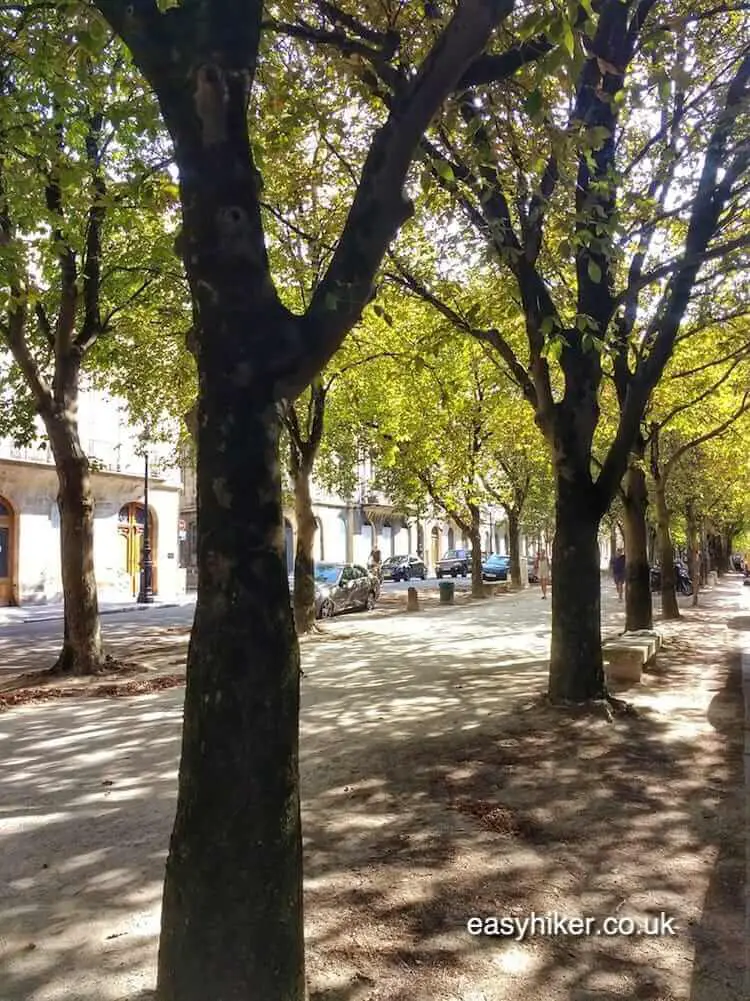
… towards the Rue Notre Dame, the high street of the Chartrons quarter.
Today, this street has a youthful and bohemian character …

… but in centuries past, it was the hub of Bordeaux’s wine industry, serving as the ideal location for all kinds of commercial activities on the strength of its proximity to the Garonne river and its port facilities.
Side streets such as the Impasse du Couvent were specifically laid out to connect the businesses on Rue Notre Dame with the warehouses on the river bank.

Most of these businesses have since disappeared, but on no. 65 you can still find the printing shop where the traders went to order the labels for their wine bottles.

And do not miss a short detour into Rue Tourat, where you can find some of the town’s most spectacularly sculptured grape trellises.

At the end of Rue Notre Dame, behind the Rue Borie and its Musée du Vin et du Négoce de Bordeaux (another short optional detour), turn right into Rue Barreyre and immediately left into Rue Andre Darbon for the Rue du Faubourg des Arts.
In the old days, this was the city’s main location for wine warehouses. Some of the ancient storage facilities have since been converted into ateliers for artists and start-up tech companies (on your left hand side) …

… but we continue turning right where other storage buildings have recently been covered by a modernist glass-roof construction to create an open and airy space for offices, cafes and restaurant.
Continue to the very end of the walkway into the Passage Luze, a so-called courroir through which barrels of wine would have been rolled from the inland warehouses to the port.

The passage carries the name of the Luze family, the owners of the building and of the Maison de Luze – one of the largest “wine houses” in town – for the past 200 years.
The structure of the Bordeaux wine trade, informally known as the “Place de Bordeaux”, is notoriously complex and involves several layers of middlemen.
Most importantly, these middlemen are the négociants – many of whom blend wines and sell them under their own labels – and the brokers who purchase the wine months before the harvest, long before anybody knows the quality of that year’s vintage.
Brokers provide the estate with a certain degree of commercial security, but their trade was originally established for totally different and unrelated reasons: the aristocratic estate owners involved them because they did not want to deal directly with the lowly merchants.
Turn left now into the Quai des Chartrons, which is full of residential homes that once belonged to prosperous businessmen involved in the distribution and shipping of wines.
Have a look at the house fronts, and you will find many references to the different facets of the wine business and the range of its activities.

Also cast a look into side streets such as the Impasse Tramassé which, in contrast to the Impasse du Couvent on the Rue Notre Dame, has not been prettified and which looks still the way it must have looked 100 or 200 hundred years ago.
You half expect wine barrels to come hurtling down the cobblestones at any moment.

Les Hangars on the opposite side of the street is another modern conversion of old wine warehouses.

This is where most of the barrels and bottles from the vineyards in La Nouvelle Aquitaine would eventually have wound up.
Bordeaux wine has always been, first and foremost, an export product. The Romans brought wine-growing to this part of Gaul having identified the region as the most suitable for export to the British Isles (mainly, initially at least, for the benefit of Roman soldiers and officials), and it was the English again whose demand – after the industry had suffered a centuries-long depression following the fall of the Roman Empire – brought new life to the local viniculture in the high Middle Ages: (When the Bordeaux region was part of the Plantagenet Empire, following the marriage of King Henry II and Eleanor of Aquitaine, a.k.a. Peter O’Toole and Katharine Hepburn in the Oscar-winning The Lion in Winter.)
Exports to the UK and the Anglo-Saxon world are still strong, but China is nowadays the biggest foreign market.
We finish our walk further down the Quai des Chartrons with a visit to Bordeaux’s designated wine museum, the Cité des Vins …

… whose landmark tower resembles, as some people say, the swish of wine in a glass.
The Cité des Vins, completed in 2016, reflects the determination of the industry to meet the challenges of the present with confidence and style – challenges that have, for almost a decade now, brought the Bordeaux wine business to a crossroads. Consumption in France is down (the domestic market accounts for approx. 50 percent of sales), the long-term effects of Brexit and US tax hikes are uncertain, and production has exceeded demand for several years.
Now take a look across the harbour where, somewhere to your left in the distance, one of Bordeaux’s largest Maison du Vin now resides, …

… the house of Johanès Boubée, established in 1860 but effectively run today as a branch of Carrefour, the multinational French supermarket chain.
Supermarkets are the new superpower on the Place de Bordeaux – but they prefer to make their own rules and to operate according to their commercial needs, not to the conventions of a bygone age. They also prefer to operate from an ambiente which is a good deal less stylish and showy than the Quai des Chartrons or the Cours Arnozan.
The wine trade in Bordeaux, at a crossroads, appears to have made up its mind – and decided to head for the larger profits rather than its own traditions, using the glamour of its “Golden Age” merely to decorate the shop front.
For us, as consumers and visitors, however, there remains a lot to enjoy: the shop front is still mightily impressive, as we have seen today, and the product for sale has few rivals in the world.
I think we can all happily drink to that.

